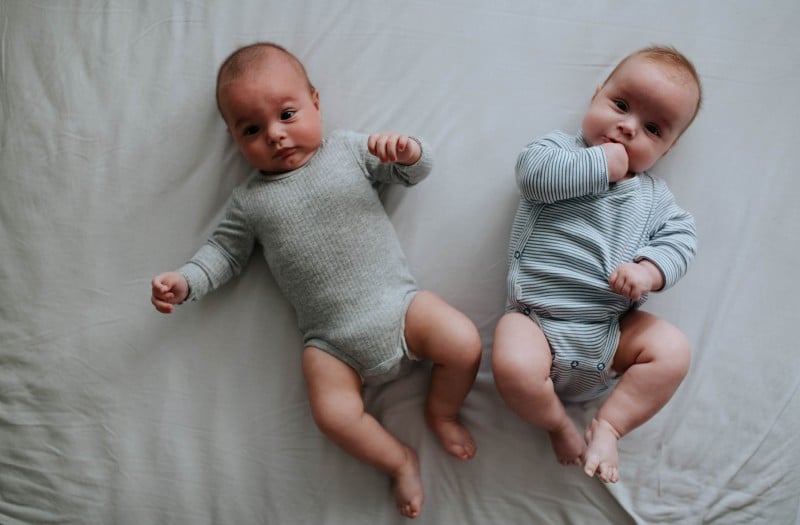Current evidence shows that the safest way to sleep twins at home is to place them in their own safe sleep space and follow the Red Nose safe sleep recommendations.
Red Nose recommends six key steps to help reduce the risk of sudden infant death and sleeping accidents:
1. Always place baby on their back to sleep, not on the tummy or side
2. Keep baby’s face and head uncovered
3. Keep baby smoke free before birth and after
4. Safe sleeping environment night and day
5. Sleep baby in their own safe sleep space in the same room as their parent or caregiver for at least the first 6 months.
6. Breastfeed baby
But what does a safe sleeping environment look like when you have twins?
Current evidence shows that the safest way to sleep twins at home is to place them in their own cot and follow the Red Nose safe sleep recommendations. These recommendations aim to reduce the risk of SUDI, including SIDS and fatal sleep accidents. The American Academy of Pediatrics also advises separate sleep surfaces and to avoid co-bedding for twins (and higher order multiples) in both hospital and at home. The reason for separate sleep spaces is to prevent one twin (or their bedding) from covering the head and face of the other, interfering with breathing.
While sleeping twins in individual sleep spaces is ideal, we know that sometimes parents will need to use one cot for both twins, whether during travel, or to allow the babies to sleep in the parents’ room for the first few months.
If you do need to sleep bubs in the same cot, remember:
- Place the babies head to head, at opposite ends of the cot (see diagrams below)
- Never place the babies in the cot with any other children
- Do not use bedding. Safe alternatives to bedding include:
IMPORTANT: When the babies are able to move freely around the cot, place them to sleep in separate cots.
Did you find this helpful?
Good job! Please give your positive feedback
How could we improve this post? Please Help us.
